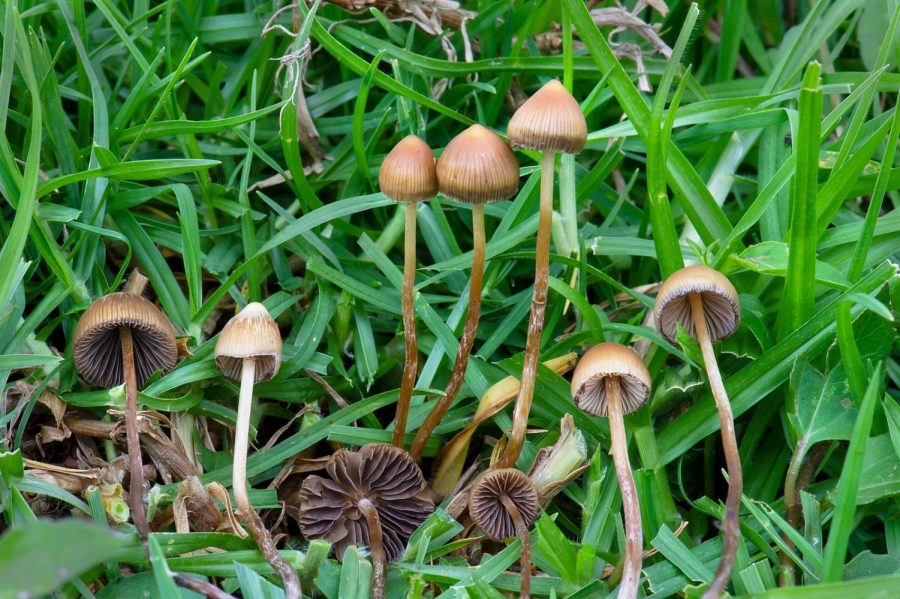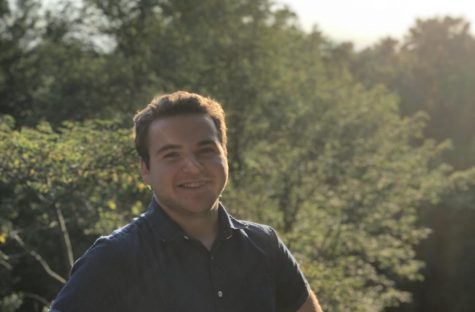The mystical world of psilocybin mushrooms
Editor-in-Chief, Nick Sack, delves into the history and health potential of psilocybin mushrooms.
Mar 31, 2023
Psilocybin mushrooms, also known as magic mushrooms, have been used for centuries by indigenous communities in Mexico and Central America for spiritual and medicinal purposes. In recent years, scientific research has begun to explore the therapeutic potential of psilocybin and other hallucinogens in the treatment of mental health conditions such as anxiety, depression and addiction.
One of the most intriguing aspects of psilocybin mushrooms is the ability to induce so-called “mystical experiences” in people. Researchers use a questionnaire known as the “mysticism scale” which is, as described in a 2006 psilocybin study, a tool to assess a variety of factors including: an intuitive knowledge of ultimate reality, sacredness, internal unity, transcendence of time and space, ineffability (indescribability), a feeling of the unity of all things and a feeling that all things are alive.
These experiences are characterized by a profound sense of interconnectedness and unity with the universe and have been shown to have long-lasting positive effects on mental health and wellbeing.
The “Stoned Ape Theory,” popularized by ethnobotanist Terence McKenna, suggests that early humans may have used psilocybin mushrooms for cognitive enhancement and spiritual exploration. According to the theory, the consumption of psilocybin mushrooms, which have been found worldwide, may have played a role in the evolution of human consciousness and the development of language and culture.
Similarly, the work of Mexican curandera Maria Sabina has shed light on the traditional use of psilocybin mushrooms in indigenous healing ceremonies. Sabina was a Mazatec healer who used psilocybin mushrooms in her healing rituals and gained fame in the 1950s and 1960s when she was visited by Westerners seeking spiritual enlightenment. Other indigenous cultures have used similar natural ingredients, like ayahuasca (which contains DMT) and peyote (which contains mescaline), to induce similar experiences or connect to a higher spiritual entity.
However, it is important to acknowledge the cultural context of psilocybin use and the potential for cultural appropriation. Indigenous communities have faced exploitative tourism and marginalization in the wake of increased interest in psilocybin mushrooms and their potential therapeutic benefits. It is essential to approach the use of psilocybin with cultural sensitivity and respect for indigenous cultures. For these cultures, psilocybin is used for a purpose, not as a means to get “high.”
In recent years, there has been a surge of interest in the therapeutic potential of psilocybin mushrooms. Studies such as “Hallucinogens as Medicine,” done by Johns Hopkins, have shown promising results in the use of psilocybin in therapeutic settings. The study explored the use of psilocybin in the treatment of anxiety and depression in cancer patients and found that a single dose of psilocybin led to significant reductions in symptoms and improvements in mood and quality of life.
Research has also shown that psilocybin can be effective in the treatment of addiction, with studies suggesting that the substance may help individuals overcome nicotine and alcohol dependence. Additionally, psilocybin has shown promise in the treatment of post-traumatic stress disorder (PTSD), with research indicating that it may be effective in reducing symptoms such as anxiety and depression.
One of the key mechanisms behind the therapeutic effects of psilocybin is the induction of these so-called “mystical experiences.” Researchers believe that the profound sense of interconnectedness and unity experienced during mystical experiences can have long-lasting positive effects on mental health and wellbeing. Additionally, psilocybin has been shown to increase neuroplasticity and reduce activity in the default mode network, a network of brain regions associated with self-referential thinking and rumination. This means that it can be used to reduce negative thoughts and repair damage to the brain.
However, it is crucial to approach the use of psilocybin legally and with caution and in safe, controlled settings to minimize risks and maximize therapeutic benefits. Psilocybin can induce challenging experiences and may have adverse effects in individuals with a history of mental health conditions or other medical conditions. The use of psilocybin should only be conducted under the guidance of trained professionals in safe and controlled settings.
Psilocybin mushrooms offer fascinating avenues for exploration in the fields of consciousness, spirituality and mental health. The induction of mystical experiences and the therapeutic potential of psilocybin offer exciting prospects for the treatment of mental health conditions, but it is important to approach the use of psilocybin with caution and respect for the cultural context of its traditional use. Continued research and education are necessary to fully understand the potential benefits and risks of psilocybin and to ensure its safe and responsible use in therapeutic and spiritual contexts.













